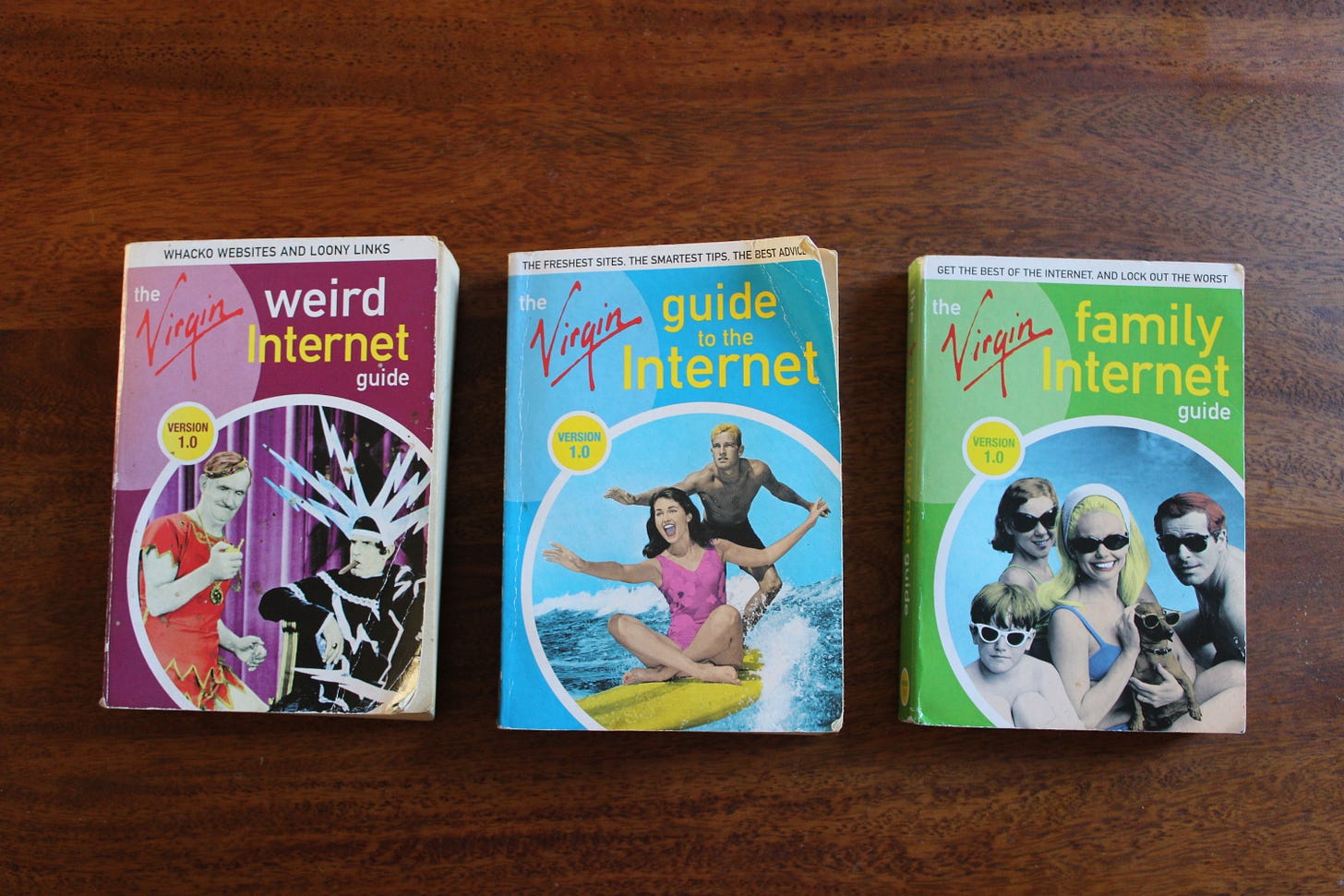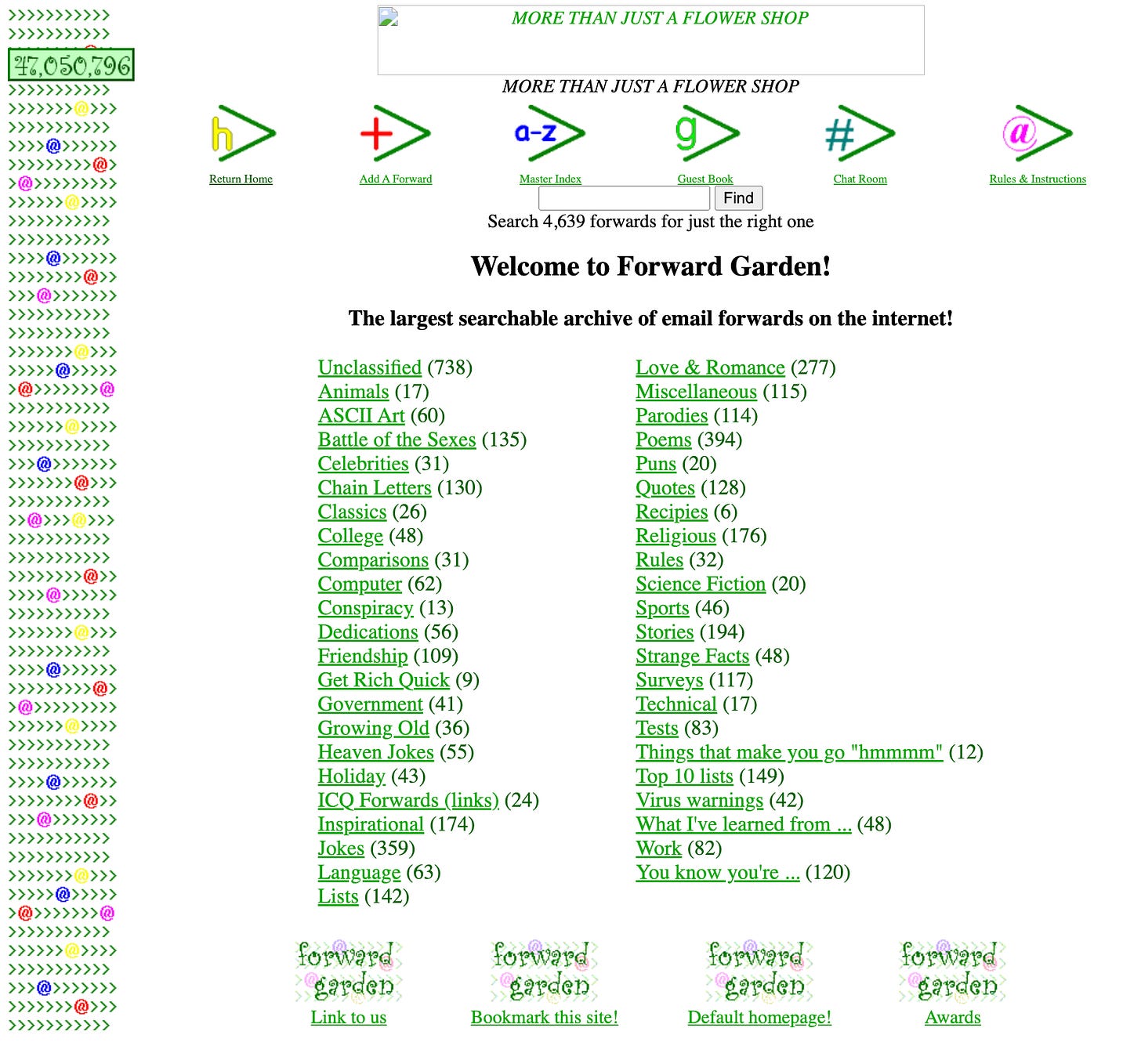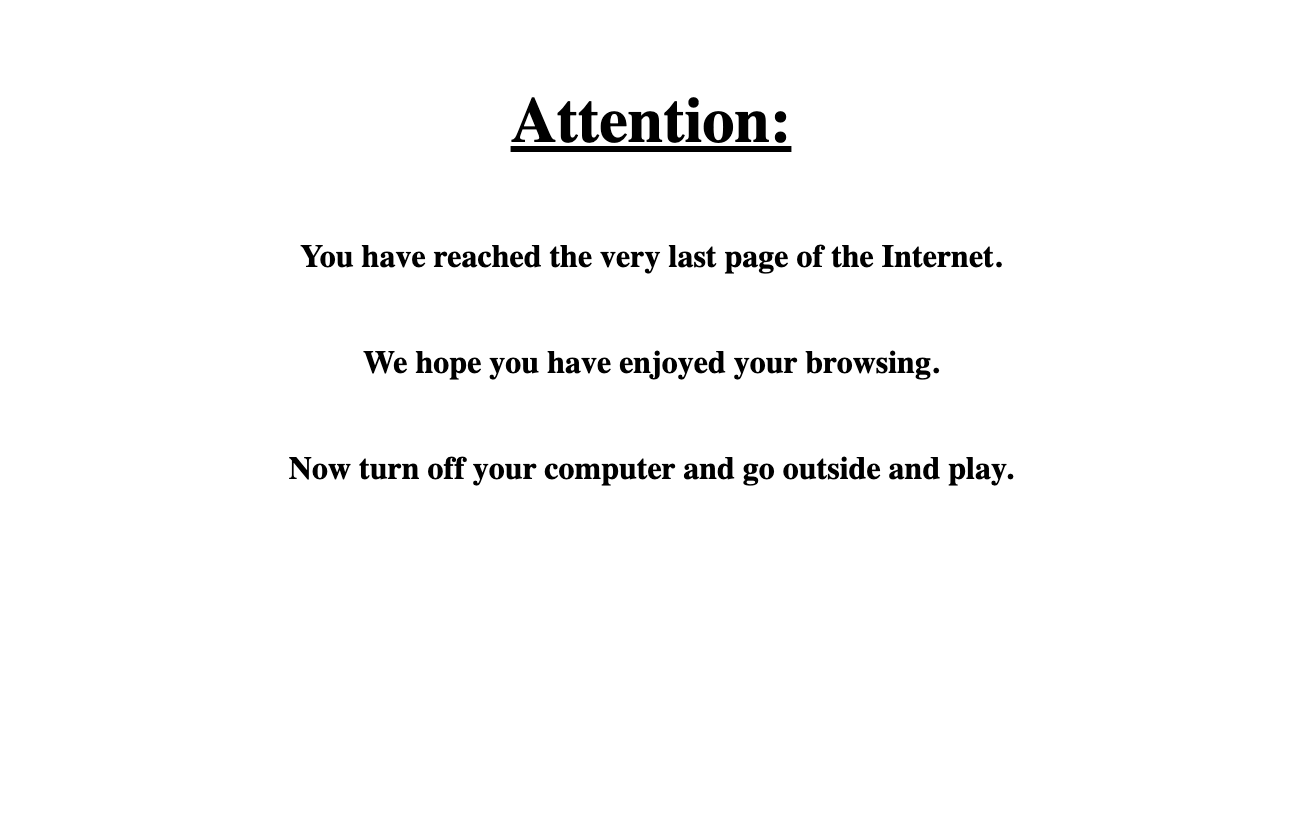These 25-year-old internet guides capture the quirks of the early web
Plus, a few of my favorite 2000s-era websites, with a bit of help from the Wayback Machine.
Like many other internet enthusiasts who’ve found themselves overwhelmed, disoriented, and otherwise out of sync with the current state of social media, I’ve recently been drawn to the weirdness and magic of the "old web." To fuel this curiosity, I’ve been browsing eBay, ThriftBooks, and even some good old-fashioned used bookstores to find physical internet guides.
Last summer, I picked up four of the internet guides that Virgin Publishing released in 1999 and 2000 (I made a TikTok at the time). My haul included "Guide to the Internet," "Internet Shopping Guide" (which I sadly cannot find at the moment), "Family Internet Guide," and "Weird Internet Guide." The first three were written by Simon Collin and the fourth was written by Steve Hornby.
There’s a ton of good stuff in these books, and at some point I want to get my hands on the others—"Internet Music Guide," "Internet Research Guide," "Internet Money Guide," "Internet Travel Guide," "Internet Business Guide," and "Internet Guide for Kids"—and do a bit more digging on how they came together. So, I might write a part two sometime in the future. For now, here’s the gist of what I discovered.
The books are organized into topic-based chapters—Gardening! Food and Drink! Art and Culture!—with subtopics categorizing lists of websites (and sometimes Usenet groups). The general "Guide to the Internet" (the one with the blue cover) also includes a short history of the internet and World Wide Web.
"The web is notorious for many different things: news, shopping, freaks, and pornography," asserts the introduction for "Weird Internet Guide." Indeed! "But one of the best things about it is the glimpse it gives into the stranger and wilder outposts of the human imagination, via sites made for no financial gain—they exist simply because they can."
What stuck out to me…
As someone who is online all day for work, personal life, and everything in between, I often find it hard to not feel jaded about the dilemmas the current internet and social media landscape present. Reading the introductions to these guides, I was struck by their optimism and sense of possibility. In the first chapter of "Guide to the Internet," Collin writes, "Compared to the original users struggling on a slow, text-based network in the early 1980s, we have it good. . . . The Internet is grown up now and ready and able to earn its way. The techies who built and still defend it will always use it, but they can no longer control it—it’s just too big and powerful." That last part is a weirdly poetic sentiment I find both true and not.
I’ve only tested out a fraction of the websites listed in these books. Many required some tinkering with the Wayback Machine, and even then, some I sadly could not reach. "The internet is evolving so fast that, even though this book was correct at the time of going to press, there could be a few dud addresses or omissions," warns a note in "Guide to the Internet."
Even on the cusp of the millennium, alongside the optimism was a feeling of information overload. In "Guide to the Internet," Collin writes that the book is "for the millions of people who are overwhelmed or frustrated by the sheer size and complexity of what’s out there." They thought they were overwhelmed then! While digital gardens, personal Notions, "media I consumed this week" TikTok roundups, personalized news podcasts, recommendation newsletters, Substacks with curated link lists, and other media and information management strategies seem especially necessary now, this isn’t a new problem online (or offline, for that matter).
I’m reminded to think about internet phenomena not in a vacuum, but as part of a complex and layered history of the web. It sounds obvious, but I’ve found that internet trend reporting can train you to pluck trends straight from the TikTok For You page without slowing down to understand the context they’re emerging from.
Some of my favorite websites from the Virgin internet guides
I tried to get Wayback Machine snapshots from around 2000, but you can go forward or backward in time to see how they develop in style, content—and at what point they morph into something else or disappear.
A website where you could email anyone a virtual omelette. I would like cheddar cheese, Swiss cheese, mozzarella, tomato, and mushroom on mine!
A categorized archive of forwarded emails, from ASCII Art to some pretty bad quotes.
Exactly what it sounds like. Enjoy!!
[I posted these and more of my finds on my Instagram back in September. Side note: I’ve been wanting to do a longer-term reporting project interviewing people who made cool, obscure, funky, or otherwise interesting (or uninteresting) sites on the early web. If that’s you, get in touch!]
Elsewhere online…
I’m in a bunch of random Facebook groups, one of them called "Hot Dogs" (even though I’m a longtime vegetarian-vegan). A few months ago, I noticed a lot of gripes about non-hot-dog-related political (MAGA) posts. An admin of the group wrote last September that all political posts were going to be removed, but it seems to be an ongoing problem.
Beyond giving me a laugh in a look-what-someone-posted-on-Nextdoor kind of way, this made me think about the limits of the smaller online communities where many people now choose to spend more time. Obviously, a hot dog Facebook group that lets a vegetarian/former vegan walk right in isn’t operating on the same level of vetting and intentional curation as, say, a paywalled Substack chat or Discord server. I don’t have a background in community management, but striking a balance between fostering engagement while keeping it from going off the rails seems like a delicate art.
One last thing…
If you like internet-related memes, I post every day on my Instagram. I’m trying to post on Substack notes, but Instagram’s where you’ll get the whole of it.








